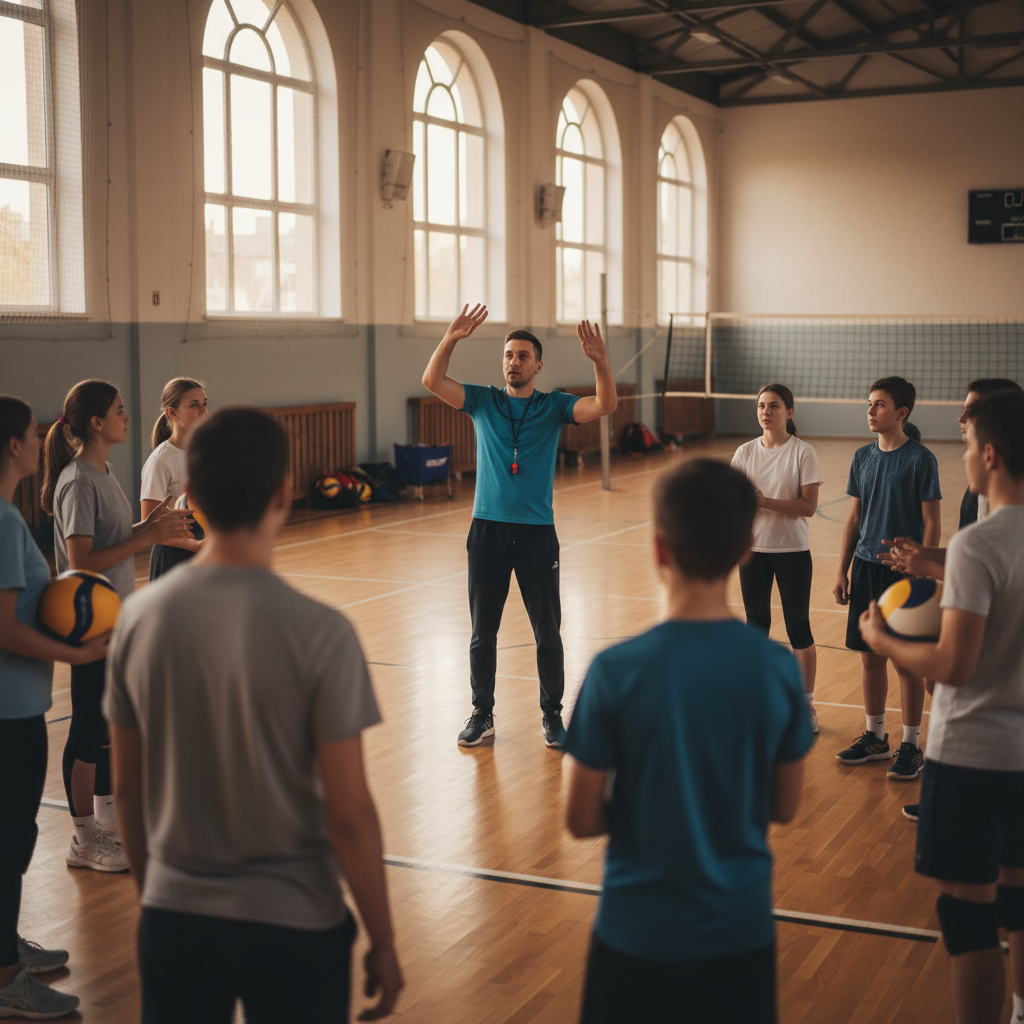
Table of Contents
Introduction
Have you ever wondered which sports capture the hearts and minds of people around the globe the most? The world of sports is vast and varied, but a select few have truly earned the title of “top sports” due to their immense popularity, widespread participation, and incredible viewer engagement. Whether you’re a casual fan or an avid athlete, understanding what makes these sports stand out can deepen your appreciation and help you connect with a global community united by passion and excitement.
Sports are more than just games; they embody cultures, traditions, and identities across continents. For example, soccer, known as football in most countries, boasts an estimated 4 billion followers worldwide, making it the unparalleled king of sports in terms of fan base and participation. Beyond just numbers, sports like basketball and cricket thrive by providing thrilling competitions and community involvement that span from local neighborhoods to international arenas. It’s fascinating how each sport carries its own unique legacy that appeals to diverse demographics and fulfills the universal human desire for teamwork, competition, and physical activity.
Consider the daily lives of millions who engage in sports as players or spectators. The adrenaline of a last-minute goal in soccer, the strategic plays in basketball, or the intense rivalries in cricket are moments that create lasting memories and forge social bonds. These emotional connections elevate sports beyond mere entertainment; they inspire dedication, discipline, and pride among athletes and fans alike. However, with such widespread enthusiasm comes the challenge of understanding the factors that contribute to a sport’s global stature, including accessibility, cultural relevance, and media coverage that brings these sports into millions of homes worldwide.
Many sports enthusiasts also wonder about the breadth of sports around the world and how one can decide which to follow or play. It can be overwhelming given the variety and cultural importance of each sport. Diving into these top sports not only shows their rules and highlights but also paints a picture of why they resonate so deeply. For those curious to explore or get involved, this guide will bring clarity and insight into the rich tapestry of global sports culture.
What You’ll Learn in This Guide
This comprehensive guide explores the top 10 sports in the world, offering a robust overview of their characteristics and appeal. Whether you want to become a well-rounded fan or start playing a new sport, here’s what you’ll discover:
- Understanding the Most Popular Sports: Learn about the top sports like soccer, basketball, cricket, and more, including their global reach and significance in different regions.
- Insights into Each Sport’s Unique Appeal: Discover what sets these sports apart—rules, key tournaments, and cultural impact—that makes them beloved worldwide.
- Factors Behind Their Popularity: We analyze the role of fan bases, media coverage, sponsorship, and tournament structures that fuel their growth and sustainability.
- Choosing the Right Sport for You: Find practical advice on how to select a sport to follow or play based on your interests, fitness level, and community availability.
As you proceed through this article, you’ll gain an insightful appreciation of each sport, enhancing your understanding whether you’re a curious newcomer or a seasoned enthusiast. The detailed explanations and highlights will bring you closer to the energy and excitement that millions experience worldwide through these top sports.
We will also explore the cultural and competitive factors that make these sports appealing to such vast audiences. From the role of international tournaments to how local scenes contribute to global popularity, the journey through the world’s top sports offers valuable perspectives on community, physical fitness, and entertainment.
By the end of this guide, you’ll have not only a deeper appreciation for these sports but also practical knowledge to help you get involved or appreciate the competitions you watch with greater enthusiasm. Embark on this exciting journey to see why these sports have earned their place at the pinnacle of global athletics and passion.

Building on the overview of what makes a sport one of the top in the world, such as popularity, viewership, and participation, it is essential to dive deeper into the reasons behind the global appeal of these sports. Understanding these factors helps appreciate their cultural significance and continued growth. The popularity of sports like soccer, basketball, and cricket is not accidental but results from historical developments, accessibility, and media coverage that connect billions of fans worldwide. Equally important is exploring how these sports cultivate fan engagement, regional dominance, and sustained athlete participation, which are crucial to their status as top global sports. This detailed discussion will expand on two important aspects: the factors contributing to the popularity of top sports and safety and injury prevention strategies that ensure longevity and enjoyment for players and enthusiasts alike.
Factors Contributing to the Popularity of These Sports
The global popularity of the top sports often stems from a complex interplay of cultural, economic, and structural factors that create a broad and loyal fan base. First, a key driver is the universal appeal that transcends geographic and cultural boundaries, making sports like soccer and basketball beloved around the world. These sports offer both simple rules that new fans can grasp quickly and dynamic gameplay that keeps audiences entertained. Accessibility plays a significant role too; sports that require minimal equipment or infrastructure tend to have higher participation rates, facilitating community involvement from grassroots levels to professional leagues. Moreover, the evolution of media broadcasting and sponsorship deals have massively expanded viewership, turning local competitions into global spectacles, further fueling their status.
Besides media influence, the organization of competitive structures enhances fan engagement by providing continuous opportunities for teams and athletes to compete at various levels. Well-established leagues and annual international tournaments enable consistent storylines and rivalries that reinforce fan loyalty. This competitive clarity is paired with cultural pride, as fans rally behind their local clubs or national teams, embedding sports into the social fabric of communities. Sponsorships and endorsements also provide financial resources for development programs, infrastructure improvement, and athlete support, allowing these sports to grow sustainably even in emerging markets. Together, these factors create a vibrant ecosystem that nurtures and sustains the popularity of top global sports.
Key Aspects of Factors Contributing to Popularity
To understand why certain sports dominate globally, it helps to explore the most influential factors in more detail:
- Global Fan Base: A culturally diverse and widespread fan base ensures that a sport resonates beyond localized regions. For example, soccer has a fan base spanning continents due to its universal simplicity and major tournaments like the FIFA World Cup that capture worldwide attention.
- Media and Sponsorship: Extensive broadcasting rights and sponsorship deals have transformed sports into lucrative entertainment industries. These deals help fund athlete training, improve facilities, and bring the game to living rooms worldwide, increasing viewership and engagement.
- Competitive Structure: Well-organized leagues, cups, and international competitions maintain continual interest and excitement. Regularly scheduled events and clear championship paths create narratives that keep fans invested season after season.
- Accessibility and Participation: Sports that are easy to learn and play, requiring limited equipment or space, encourage greater participation. This grassroots involvement fosters community ties and lifelong engagement, feeding back into the fan base growth.
Safety and Injury Prevention in Popular Sports
As the popularity of sports surges globally, player safety and injury prevention become central to preserving athlete well-being and the sports’ long-term sustainability. Common sports injuries range from minor strains to serious conditions such as concussions, fractures, or ligament tears, which can prematurely end careers or affect lifelong health. Given these risks, a proactive approach to safety that includes proper training, use of protective gear, and professional oversight is essential. Encouragingly, advances in sports medicine and injury prevention technologies have improved player care, enabling longer careers and safer participation at all levels. Exploring these safety dimensions reveals how sports can balance vigorous competition with athlete health preservation.
Players, coaches, and supporting medical staff play a collaborative role in implementing safety protocols that suit the sport’s specific demands. Players need to be educated about proper techniques and conditioning to avoid overuse injuries. Coaches must design training sessions that emphasize injury prevention, rest, and recovery in addition to skill development. Medical professionals offer critical support by diagnosing injuries early, managing rehabilitation, and advising on return-to-play criteria. Protective equipment tailored to each sport, such as helmets in American football or shin guards in soccer, acts as a physical barrier against injury. Together, these elements form a comprehensive safety framework that can adapt to evolving sports dynamics and challenges.
Important Considerations for Safety and Injury Prevention
Maintaining safety in popular sports involves addressing several key areas to minimize injury risk and promote health:
- Preventive Measures: Proper training programs focused on strength, flexibility, and conditioning reduce injury likelihood. Warm-ups, cool-downs, and sport-specific drills develop resilience and prepare the body for physical demands.
- Role of Coaches and Medical Staff: Coaches act as frontline guardians of player safety by enforcing rules and monitoring player health. Medical staff provide expertise in assessing injuries swiftly, delivering treatment, and guiding safe recovery processes to avoid long-term damage.
- Protective Gear: Essential equipment like helmets, mouthguards, pads, and braces serve as critical protective barriers. Sport-specific gear not only prevents injury but also boosts player confidence to perform at their best.
- Education and Awareness: Educating players, parents, and supporters about injury symptoms, risks, and prevention fosters a culture of safety awareness. Proactive steps, including concussion protocols and hydration guidelines, contribute to safer playing environments.

Conclusion
The top 10 sports in the world offer a fascinating glimpse into the varied ways people from different cultures engage with physical activity, competition, and community. From soccer’s unparalleled global reach to the regional fervor around cricket and American football, these sports captivate billions of enthusiasts with their unique blend of skill, excitement, and tradition. Each sport discussed brings with it not only distinctive rules and formats but also a vibrant fan experience, whether through stadiums packed with cheering crowds or millions watching major tournaments broadcast worldwide.
What stands out most about these sports is their ability to transcend geographical and cultural boundaries, creating global fan bases and athletes who inspire across borders. The media’s role in promoting these games, through strategic sponsorship and wide-reaching broadcasts, has only amplified their popularity, attracting new generations of fans and players. Moreover, the competitive structures—from grassroots leagues to elite international championships—provide continuous opportunities for involvement, growth, and celebration of athletic excellence. The diversity in sports like tennis, volleyball, and golf compared to team-centric games such as basketball and field hockey illustrates how different physical and social elements appeal to varied audiences around the world.
Understanding the extensive allure of these sports also involves recognizing their cultural significance and the sense of belonging they foster among fans and participants alike. Sports serve as a universal language, offering joy, physical health benefits, and social connection. This makes the exploration of the top 10 sports not simply a study of games but a journey into how communities celebrate identity and passion through athletic pursuits.
For those eager to engage more deeply, taking actionable steps can transform sports from spectator experiences to personal journeys. Consider starting by identifying which sport aligns best with your interests—whether you prefer the fast pace of basketball, the strategic depth of cricket, or the social atmosphere of volleyball. Exploring local sports clubs, recreational leagues, or community centers can provide accessible entry points to start playing or expand your knowledge. Also, watching games, following tournaments online, and joining fan groups are excellent ways to connect with others and deepen appreciation.
Physical readiness plays a huge role, so beginning with proper training and conditioning tailored to your chosen sport can prevent injuries and enhance enjoyment. Many communities offer beginner-friendly sessions and coaching support that make learning rules and techniques engaging and manageable. Importantly, sports are for everyone, regardless of age or skill level, and finding the right fit ensures you experience the benefits of fitness, teamwork, and achievement.
In closing, the top 10 sports in the world reflect the incredible diversity and dynamism of global sporting culture. They unite people through shared excitement, competition, and cultural heritage, offering lifelong opportunities to connect, challenge oneself, and celebrate human potential. Embracing any of these sports can open doors to new friendships, healthier lifestyles, and unforgettable moments. Whether as a player or fan, your journey into these captivating sports promises rewarding experiences filled with passion and camaraderie.
